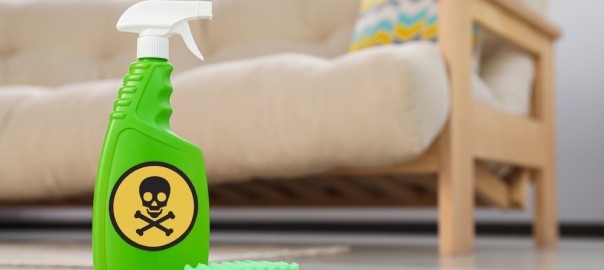
Hybrid flooring is a quality type of flooring that is stylish, waterproof, and extremely affordable. But as people become more and more health-conscious, we’re starting to ask important questions about the products we fill our homes with. And one of those questions is whether hybrid flooring is toxic, or whether it’s safe.
Before we get into the answer, we need to cover some basics about hybrid flooring. This type of flooring is usually a mixture of laminate and vinyl, which are blended together to create a rigid, waterproof, and scratch-resistant material. This is the top layer of the flooring. The bottom layer of the flooring is an underlay that is made of foam and rubber, which provides it with cushioning and soundproofing, and this is where the possibility of toxicity comes in.
The foam and rubber elements of the underlay can contain compounds like formaldehyde, ethanol, and acetone, which are known as volatile organic compounds (VOCs). They are called “volatile” because they have a high vapour pressure at room temperature, which means that their chemicals can evaporate and be released into the air—something called off-gassing (or out-gassing). These chemicals can affect your health when breathed in for long periods of time. They can irritate your eyes, nose, and throat, lead to breathing difficulties, nausea, and even damage the central nervous system. Some VOCs can cause cancer too. These can be found in both common types of hybrid flooring—stone plastic composite (SPC) and wood plastic composite (WPC)—because both have the underlay attached to them.
So hybrid flooring can be toxic, but manufacturers should also try their best to create products that have low VOC emissions, and include a VOC rating in their specifications. The ideal VOC rating is E0, which has the lowest emissions by Australian standards. E1 is also considered to be acceptable by these standards. But these ratings often aren’t included on sellers’ websites, so to be extra safe, you should consider asking.
If you’ve already installed hybrid flooring and you’re worried about the quality of the air in your home, you can find an air testing company to measure VOC levels. They will tend to use a professional tool called a photoionization detector (PID), which approximates the total level of VOCs in the air. They might also use flame ionization detectors (FIDs) or metal oxide semiconductor sensors (MOSs) to measure VOC levels.
There has also been some recent concern over the silica content of hybrid flooring, which can cause a lung condition called silicosis. The silica may be released if the hybrid flooring needs to be cut during installation, and can be reduced through the process of wet cutting instead. Regardless of how the cutting occurs, it’s important for the newly-floored area to be thoroughly cleaned after it has been installed. Companies who import and sell hybrid flooring should take measures to ensure that it doesn’t exceed 0.1mg/m3 of silica, and again, this information almost certainly won’t be included on their websites, so it may be worth asking.
Reference:
Volatile Organic Compounds | American Lung Association





